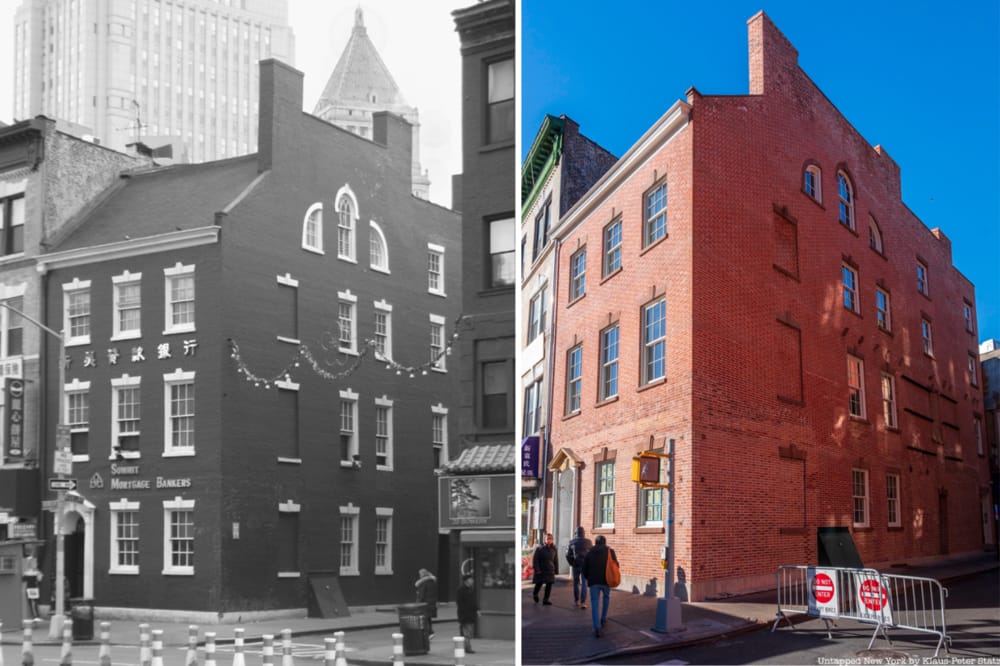Last Chance to Catch NYC's Holiday Notalgia Train
We met the voices of the NYC subway on our nostalgia ride this weekend!

The Bowery, NYC's oldest thoroughfare, is unsurprisingly home to the oldest surviving brick row house in the city at 18 Bowery!

The Bowery, New York City’s oldest thoroughfare, is unsurprisingly home to the city’s oldest surviving brick row house, which dates back to just after the American Revolution. The multi-story building (formally known as the Edward Mooney House), was built between 1785 and 1789 at 18 Bowery on the corner of Pell Street. Over the years, it’s been repurposed several times, but it harbors a notorious history that involves a diverse mix of tenants.

Sunday, September 7th at 1:30 pm: Explore NYC's oldest street and go inside two historic locations along the way!
⭐ Insiders get 50% off
“Windows on the Bowery,” a historic signage project developed in a collaboration between The Cooper Union and the Bowery Alliance of Neighbors, highlights the brick house as one of 63 notable places on Bowery. Constructed shortly after the British evacuated New York, the structure was built in both the pre-Revolutionary Georgian and Federal styles, and sits on land formerly owned by British Loyalist, James Delancey. It was finished the same year George Washington was inaugurated as the first President of the United States and New York City became the first Capital of the nation.

Following the Revolution, Delancy’s property was confiscated and later purchased by a wealthy racehorse breeder and wholesale butcher named Edward Mooney. Mooney erected the townhouse at this site and lived there until his death in 1800. At the time, slaughterhouses and tanneries proliferated the neighborhood, providing the ideal context for Mooney to make a name for himself.
In the time since, the brick building has been repurposed several times: in 1807, it doubled in size with an addition to the rear. By the 1820s, it was converted to a tavern, and then took on life as a hotel, poolroom, brothel, store, restaurant, and Chinese club. It was recently home to the Summit Mortgage Bank, which has since moved to 15 Division Street.
The most notable occupant, however, was Barney Flynn’s Saloon, described by Mitchell Grubler, the Landmarks Committee Chair of the Bowery Alliance of Neighbors, as “the hangout of the pugilists,” where sporting men and gang members came together in the early 1900s, according to Atlas Obscura. It was also the base of operations for Chuck Connors, self-described as the “White Mayor of Chinatown” and known for his “slumming tours,” which would bring guests to visit bars and opium dens in the neighborhood.

The Neighborhood Preservation Center calls it “an unique example of the domestic architecture which nourished in Manhattan two centuries ago.” For this reason, it was designated a New York City landmark in 1966 and later restored in 1971.
Though quite low-key to the casual passerby — particularly within the context of bustling Chinatown — the Mooney House stands today as a symbol of colonial New York. With many original details still intact, including its window frames and trim, the building remains in a remarkably good state of preservation.

The home most recently sold in 2013 for over $5.3 million. Untapped New York was treated to an exclusive virtual look inside from the current owner who showed us a second-floor loft available for event rentals, the unfinished storefront space on the ground floor, and the third-floor attic space with original beams. In recent years, the home has undergone evident restoration work with the removal of its chipping red paint, new windows, and a fixed-up door pediment. The renovation recently won a Lucy G. Moses Preservation Award!
Next, check out 5 Alleys and Small Streets in Chinatown Tell the Neighborhood’s Vibrant History and Inside the The Doyers Street Tunnel in Chinatown.
Subscribe to our newsletter